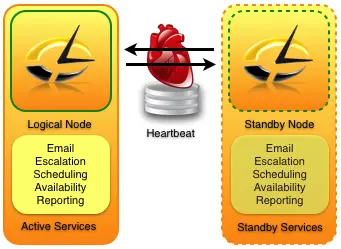Recently I was assigned to work on reverse proxies So I did some brain storming of some know proxies such as Apache and Squid then Googled to find which are other good reverse proxies are available. There are so many open source reverse proxies in market. Out of these most popular are
1.Apache(this is having a lots of disadvantages)
2.Squid
3.Pound
Which reverse proxy is good?
There are so many good reverse proxies some of them ar as below. Please comment on this with your favorite Reverse proxy servers.
Let us have a look on some proxies.
1.Lighttpd (pronounced “lighty” or “Light-TPD”) is a web server designed to be secure, fast, standards-compliant and flexible while being optimized for speed-critical environments. Its low memory footprint (compared to other web servers), light CPU load and speed goals make lighttpd suitable for servers that are suffering load problems, or for serving static media separately from dynamic content. Run by many companies where requests are high. Lighttpd is used by some of the biggest websites, including sites such as meebo. Wikimedia runs Lighttpd servers as does SourceForge. Three of the most famous torrent listing websites, the Pirate Bay, Mininova and ISOHunt, which have more than 1,000 hit’s per second, also use Lighttpd.
Some Features:
1. Load-balancing FastCGI, SCGI and HTTP proxy support
2. Chroot support
3. Select()-/poll()-/epoll() based web server
4. Support for more efficient event notification schemes like kqueue and epoll
5. Conditional rewrites (mod_rewrite)
6. SSL and TLS support, via OpenSSL.
7. Authentication against an LDAP server
8. RRDtool statistics
9. Rule-based downloading with possibility of a script handling only Authentication
Server Side Includes support
10. Flexible virtual hosting
Modules support
11. Cache Meta Language (currently being replaced by mod_magnet) using the Lua programming language
12. Minimal WebDAV support
13. Servlet (AJP) support (in versions 1.5.x and up)
HTTP compression using mod_compress and the newer mod_deflate (1.5.x)
14. Light-weight (less than 1 MB)
Single-process design with only several threads. No processes or threads started per connection.
2.Nginx (pronounced as “engine X”) is a lightweight, high performance
webserver/reverse proxy and e-mail (IMAP/POP3) proxy. It can serve 500 million requests per day. Currently nginx doing reverse proxy can serve over tens of millions of HTTP requests per day (that’s a few hundred per second) on a *single server*. At peak load it uses about 15MB RAM and 10% CPU. Under the same kind of load, apache falls over (after using 1000 or so processes and god knows how much RAM), pound falls over (too many threads, and using 400MB+ of RAM for all the thread stacks), and lighty *leaks* more than 20MB per hour (and uses more CPU, but not significantly more). Used by wordpress.com for high performance.
1. Handling of static files, index files and auto-indexing
2. Reverse proxy with caching
3. Load balancing
4. Fault tolerance
5. SSL support
6. FastCGI support, with caching.
7. Name- and IP-based virtual servers
8. FLV streaming
9. MP4 streaming, using the MP4 streaming module
10. Web page access authentication
11. SMTP, POP3 and IMAP proxy
12. STARTTLS support
13. SSL support
3.Pound is a lightweight open source reverse proxy program suitable to be used as a web server load balancing solution. Developed by an IT security company, it has a strong emphasis on security. Using regular expression matching on the requested URLs, Pound can pass different kinds of requests to different backend server groups.
1. Detects when a backend server fails or recovers, and bases it’s load balancing decisions on this information: if a backend server fails, it will not receive requests until it recovers
2. Decrypts https requests to http ones
3. Rejects incorrect requests
4. Can be used in a chroot environment
5. Has no special requirements concerning which web server software or browser to use
6. Supports virtual hosts
4.Varnish is an HTTP accelerator designed for content-heavy dynamic web sites. Good for even static content too. Varnish supports load balancing using both a round-robin and a random director, both with a per-backend weighting. Basic health-checking of back ends is also available.
5.Perlbal is a Perl-based reverse proxy load balancer and web server. The program is usually used by large web sites, to distribute the load over a number of servers. Perlbal also features a so-called “re-proxy” mechanism.
References:
http://www.ruby-forum.com/topic/96361
http://en.wikipedia.org/wiki/Reverse_proxy





